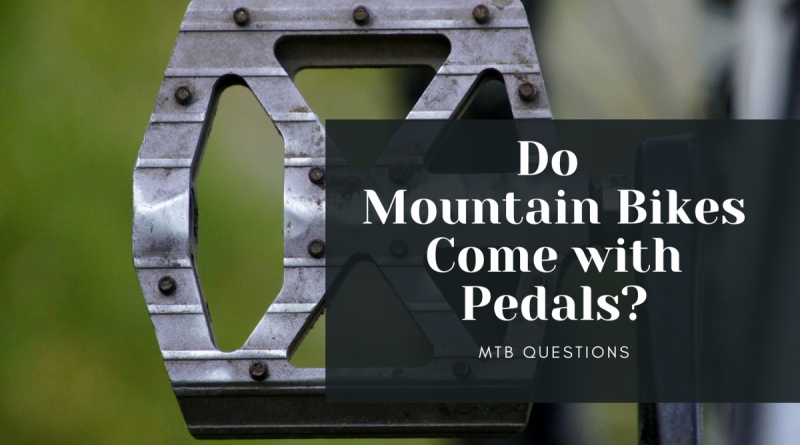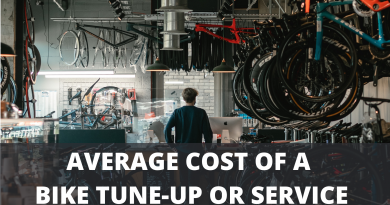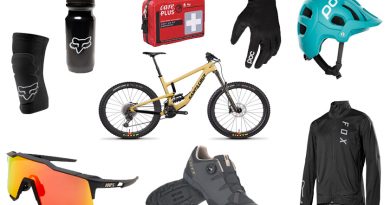Do Mountain Bikes Come With Pedals? (Solved)
Do Mountain Bikes Come With Pedals?
New mountain bikes don’t usually come with pedals. This is especially true when buying a high mountain bike. Sometimes new mountain bikes may come with a very cheap, basic pedals set of pedals. I know it may seem strange when you’re spending $2000-$8000+ on a new bike.
- Do Mountain Bikes Come With Pedals?
- Why Don't New Mountain Bikes Come with Pedals?
- Do Specialized Bikes Come With Pedals?
- Do Giant Mountain Bikes Come With Pedals?
- What Is the Difference Between Clipless and Flat Pedals?
- Do Mountain Bikes Have Clipless Pedals?
- Should You Grease Pedal Threads?
- What Is The Difference Between Clipless And SPD Pedals?
- Do Mountain Bike Pedals Make a Difference?
- Should I Switch To Clipless Pedals?
- What Size Thread Are Mountain Bike Pedals?
- Can You Ride Clip Pedals With Normal Shoes?
- Which Clipless Pedals Are Easiest?
- Which Pedal is Reverse Thread?
- Why Does My Bike Pedal Keep Falling off?
Why Don’t New Mountain Bikes Come with Pedals?
There are two reasons why most mountain bike manufacturers don’t typically supply pedals:
- Personal preference. New mountain bikes don’t come with pedals because most advanced mountain bikers have their own preference when it comes to pedals. Some riders prefer to ride a specific type of flat pedals, and others choose to ride a specific type of clipless pedals. Flat pedals are the normal type of pedal with pins, and clipless pedals are designed to attach the rider’s shoes via a metal cleat.
- Cost. The other reason is cost. Have you ever noticed most high-end mountain bikes also come with a cheap handlebar and stem? This is because most brands have a budget to spend on fitting out their bikes with components, so they often try and focus the budget on things like drivetrain, brakes, and suspension. So not having to provide pedals helps marginally keep costs down.
What Is the Difference Between Clipless and Flat Pedals?
Clipless pedals connect the rider to the bike via a mechanism that attaches to their shoes, whereas flat pedals connect the rider’s shoes purely via grip.
A clipless pedal connects to the rider shoe via a cleat. Clipless pedals are designed to be used with a compatible clipless shoe that has the correct metal cleats attached. The metal cleat must correspond to the brand of clipless pedals in order to work.
A flat pedal is a normal pedal with pins. These pins are designed to gain traction against the rider’s shoes to help the rider gain grip. To get the best performance, you must use sticky rubber-soled shoes like Fivetens and a set of quality pedals with metal pins.
Check out our post on What Shoes To Wear Mountain Biking? (Complete Guide)
Do Mountain Bikes Have Clipless Pedals?
Yes, mountain bikes are commonly used with clipless pedals. It’s not just road cyclists that like to use clipless pedals. However, mountain bike clipless pedals are different from road riding clipless pedals. Mountain bike clipless pedals have a good amount of float/movement in the pedal to allow the rider to move more on the bike, unlike road clipless pedals, which are tight and are purely designed for pedaling efficiency.
Should You Grease Pedal Threads?
Yes, it would be best if you used grease on pedal threads to prevent them from seizing. A general grease will do the job, or if not Lithium grease should work fine.
What Is The Difference Between Clipless And SPD Pedals?
There is no difference between clipless and SPD pedals. SPD pedals are a type of clipless pedal made by Shimano. It’s good to note that there are many other types of clipless pedals from other brands, not just SPDs. If you are curious, SPD stands for ‘Shimano Pedaling Dynamics.
Do Mountain Bike Pedals Make a Difference?
Yes, mountain bike pedals do make a big difference! Your pedals are one of the two main contact points on the bike; they help give you control, pedaling power, and confidence. The pedals you choose to ride say a lot about your riding style and riding preference. Some like skinny lightweight clipless pedals for going long distances. Others prefer big flat pedals for going fast in turns and hitting jumps. There is no right or wrong answer when it comes to pedals, just what works best for you. So it’s worth testing both flat and clipless pedals to see which puts the biggest smile on your face.
Should I Switch To Clipless Pedals?
Clipless pedals are always good to try at some point. Some people love the feeling of being attached to the bike with clipless pedals, and others find flat pedals more confidence-inspiring. As a rule of thumb, endurance cyclists like; cross county, and trail riders tend to opt more for clipless pedals to help improve pedaling efficiency. However, many downhill riders like clipless pedals as they feel it gives them more control of the bike and doesn’t have to worry about their feet bouncing off the pedals on rough terrain.
What Size Thread Are Mountain Bike Pedals?
Typically mountain bike pedals use a 9/16″ x 20 threads per inch. However, some older, or cheaper bikes that use a one-piece crank, often have 1/2 inch thread pedals.
Can You Ride Clip Pedals With Normal Shoes?
Yes, you can ride clipless pedals without clipless shoes. However, it’s not recommended, especially for a long ride, because you won’t be able to clip in, and it’s incredibly uncomfortable. If you only have normal shoes, it is recommended to switch to a pair of flat pedals.
Check out our post: What Shoes To Wear Mountain Biking? (Complete Guide)
Which Clipless Pedals Are Easiest?
For beginners, most people would say it’s worth starting with a Shimano SPD clipless pedal because you can normally adjust the pedal, so it releases easily, to begin with. The other big advantage not many people talk about with SPD’s is that they give a nice positive ‘click’, so you know if you are clipped in or out.
Which Pedal is Reverse Thread?
The left pedal thread is reverse threaded. So when facing the left crank, turn the pedal clockwise to loosen. The left crank is normal, ‘so righty tighty, lefty loosey’.
Why Does My Bike Pedal Keep Falling off?
If you have done your pedals up tight enough and they keep falling off, it’s most likely because the pedals have been ridden loose and have damaged the thread in the cranks. To fix this, you may need to either replace the cranks, insert a Helicoil, or you could try a strong Loctite (Loctite won’t work if the threads are badly damaged).
Other resources you may find useful:






